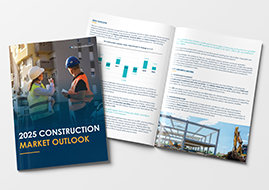By: Maggie Massimine

April 26, 2024 — Did you know that there were 5,486 fatal work injuries in 2022 according to OSHA? (OSHA, n.d.) Many, if not most, of these deaths could have been prevented with heightened safety training. The quality of the training, as well as the quantity (meaning, the required hours), are regulated by the laws of local jurisdictions and the policies of individual companies. However, the industry is facing new challenges, from staffing shortages and inexperienced workers to supply chain delays. As the industry evolves, organizations need to consider how to best position their projects for success.
Jurisdictions such as New York City (NYC) and Boston have begun to implement strict laws requiring increased training for workers and supervisors on-site, and so far, these laws have led to positive impacts. According to the 2022 New York City Construction Safety Report, NYC has seen a 27% decrease in injuries on building construction work sites between 2018 and 2022 following the implementation of Local Law 196, which requires workers on large-scale projects to obtain 40 hours of site safety training and supervisors to obtain 62 hours of site safety training.1
You may be asking yourself, "My jurisdiction has no such requirements — what does this have to do with me?" The answer lies in a company's ability to implement its own training requirements. According to OSHA, the top five most frequently violated standards are fall protection, hazard communication, ladders, and respiratory protection, and in NYC specifically, "worker falls continue to be the leading cause of fatalities and serious injuries on construction sites." (Kazimir Vilenchik 2023) Implementing a wider variety of safety training requirements, such as fall prevention, supported scaffold, pre-task safety meetings, and toolbox talks, can benefit a worker's understanding of safety standards and best practices. This will decrease the risk of injury and death for themselves, as well as those around them, and, ultimately, lower a company's total cost of risk (TCOR).
In addition to improved safety training for employees, "contractors can benefit from project-specific or enterprise-wide loss prevention quality assurance consultants with expertise in safety, environmental health and safety, special investigations, and emergency medical technicians for major construction projects," says Greg Perruzzi, SVP — Construction Vertical practice, in his article "4 Keys to Controlling Total Cost of Risk in Construction." By partnering with safety experts, construction companies can further improve site conditions, protect workers, and lower their TCOR by investing in comprehensive safety training and practices.
At Gallagher Bassett, we understand the tight margins that the construction industry functions with and how the cost of insurance can impact a company's bottom line. We provide comprehensive end-to-end risk management solutions and comprehensive training solutions to help our clients safeguard their operations.
Author
Sources
Kazimir Vilenchik, P.E. 2023. "2024 New York City Construction Safety Report". April 03. https://www.nyc.gov/assets/buildings/pdf/con_safe_2022.pdf.
OSHA, Commonly Used Statistics. Accessed 04 25, 2024. https://www.osha.gov/data/commonstats.
Make Gallagher Bassett your dependable partner
When making the right decision at the right time is critical to minimize risk for your business, count on Gallagher Bassett's extensive experience and global network to deliver.


